In 1963, as the very first season of Doctor Who was gearing up for broadcast, the show’s format and direction were still taking shape. Writer Anthony Coburn had been commissioned to write the first four-part story, including the revolutionary pilot episode. On the strength of this work, Coburn was also hired to write the followup story, to be the second serial of the series, entitled “The Masters of Luxor.”
However, the decision was ultimately made to substitute Terry Nation’s more action-oriented (and certainly more lurid) story “The Daleks” for “Luxor,” and that serial’s immense popularity with the British public both secured Doctor Who’s continued viability, and seared the image of the Daleks themselves (mutants in mobile robot casings) in the imaginations of a whole generation of children. There was no turning back, and ultimately “The Masters of Luxor” was abandoned.
But, not completely lost. In 1992, Titan Books published the unused scripts as part of their Doctor Who: The Scripts range. It was this paperback that inspired a group of Chicago-area fans to finally produce this long-lost tale from Doctor Who’s formative years.

The project was initiated by director Frank Smialek, who quickly recruited his college buddy Anthony Sarlo to help him out, and also play the role of the Doctor. The two edited the original Coburn scripts, ultimately eliminating over an hour’s worth of superfluous material (the pacing of early ‘60s television was quite different from today) and re-shaping it slightly to give the Doctor a more active role, as well as making him Susan’s uncle rather than her grandfather. In a move that sets it apart from most fan film productions, Smialek decided to shoot the video straight through, and so booked a studio in Morton Grove, Illinois for ten days. An impressive array of sets, costumes, and props were constructed, while a mostly theater-trained cast, including Sarlo, Scott Goble (as Ian Chesterton), Stephanie Gloeckler (as Barbara Wright), Samantha Eaton (Susan), Matt Ellegood (The Perfect One), and Kirk Jackson (Tabon), were assembled. The shooting took place across those ten days, in the blisteringly hot summer of 2001, and an early cut of the video debuted later that year at the Chicago TARDIS convention. In tribute to early-‘60s Who, Smialek decided to present the video in the style of those halcyon days, including using black-and-white (the film was actually shot in color and then re-graded), minimal incidental music, simple sets, and an almost filmed-theater vibe. The result was unique in fan film history, and also a little bit legendary.
 Because – again, unlike most fan films – Masters of Luxor was never widely distributed. Despite all the hard work that went into its making, the video played only a few times at conventions (and only once in its fully completed form), and then faded into obscurity. While a few videotapes seem to have been sent out, it was never advertised or widely circulated, and the VHS tapes that did go out seem to have stayed in private hands. Consequently, the dim memories of those convention screenings had people talking in hushed tones about the fantastic TARDIS control room set, the polished acting, and the general quality of the production. It wasn’t until 2009 that Anthony Sarlo, in a bid to finally get the film “out there,” submitted the production to the Doctor Who Fan Film Database. And so, with very little fanfare, The Masters of Luxor was suddenly freely available to those who had caught a fleeting glimpse of it early in the decade, and those who had only heard the stories. Since then, Sarlo has also made available a two-disc DVD set that includes an informative audio commentary track (e-mail me if you’re interested in the DVD), and has been a semi-regular poster on the Gallifrey Base chat board.
Because – again, unlike most fan films – Masters of Luxor was never widely distributed. Despite all the hard work that went into its making, the video played only a few times at conventions (and only once in its fully completed form), and then faded into obscurity. While a few videotapes seem to have been sent out, it was never advertised or widely circulated, and the VHS tapes that did go out seem to have stayed in private hands. Consequently, the dim memories of those convention screenings had people talking in hushed tones about the fantastic TARDIS control room set, the polished acting, and the general quality of the production. It wasn’t until 2009 that Anthony Sarlo, in a bid to finally get the film “out there,” submitted the production to the Doctor Who Fan Film Database. And so, with very little fanfare, The Masters of Luxor was suddenly freely available to those who had caught a fleeting glimpse of it early in the decade, and those who had only heard the stories. Since then, Sarlo has also made available a two-disc DVD set that includes an informative audio commentary track (e-mail me if you’re interested in the DVD), and has been a semi-regular poster on the Gallifrey Base chat board.
Viewed almost a decade later, The Masters of Luxor is still a highly impressive production. The TARDIS control room set lives up to every bit of the hype (I would rate it second only to the amazing Timebase set); the performances (with perhaps one exception) are very good indeed, with Sarlo, Ellegood, and Eaton being the standouts. There are definitely slow patches, as heaps of exposition are occasionally offloaded, but this is certainly no worse than the actual series itself during the ‘60s. The costumes are terrific (especially the very ‘60s version of “futuristic” clothing), the sets are nifty, and the black-and-white photography is evocative. The best thing that can be said is that The Masters of Luxor is a genuinely fitting tribute to the original author and to the era of Doctor Who that inspired its creation.
 ANTONY SARLO INTERVIEW
ANTONY SARLO INTERVIEW
How did the project come about?
I remember Frank Smialek telling me he bought the published script off of eBay; they released the screenplay as a book years ago. This would have been around 1999 when he, Kirk Jackson and I were roommates in Chicago. He told me he was getting it and wanted to make it, and cast me as the Doctor. I said “Sure.” Between the two of us, we had a massive Doctor Who collection on VHS, and his decision to cast me was based on two things: my acting background, and his belief that I would be dedicated enough to a Doctor Who project, that I would see it through. I figured it was safe to say I would, because Frank tends to latch onto a project with 150% dedication, but his interest burns out fast. Imagine how surprised I was when we actually started making it happen.
What made you decide to do it 1963-style (black and white, minimal incidental music, etc.)?
I think that was Frank’s vision from the beginning. He actually composed and recorded all the music with the exception of the open and closing themes. We actually filmed it in color, but converted it to black and white. With a scratch-built set and live, boom-fed sound, it was nice to be able to eliminate the headache of white-balancing colors, and that let us use the overhead lights in the building rather than setting up camera lighting. I can only imagine how expensive renting lighting would have been, and of course it would have made it even hotter in the studio (If that’s possible).
Does the color footage still exist?
I’m sure Frank still has most of it somewhere, whether they’re saved to a hard-drive or even still on the DV tapes.
Why adapt an unfilmed script rather than doing an original story?
We definitely liked the idea of making an unmade script, especially since it has authentic Doctor Who writing. The project might have been delayed a year or longer, or possible never would have been made if we had to sit down and actually write a script. It was much easier for us to go through the script, then cut out things we couldn’t use, and add little bits we liked.
You eliminated more than two episodes worth of material – what kind of things were cut?
That was a script written in the earlier days of television, so there were some elements that just didn’t work. For instance, there’s a scene where Tabon needs to give the Doctor directions. In the original script, they actually go through the entire set of directions in dialogue. We just said, “Do you have a pen? I’ll draw you a map.” I also remember the Doctor saying some creepy things about how hot Susan is. Generally, the things we cut were superfluous, and we felt them unnecessary to the story. The main thing we changed was the Doctor’s role. In 1963, Ian was the hero, and the Doctor was just the plot device to get Ian into adventures, and explain things. We wanted to make the Doctor the hero, as he ended up being later, so we gave the Doctor all of Ian’s hero-work, and cut out the pages of dialogue dedicated to talking about how frail and tired the Doctor is, and how he needs to sit down. That was probably the greatest change to the original.
How much original material was written to augment the Coburn script?
Not a lot, but Frank wanted to give some signature aspects to our Doctor; one of those things was random obscure quotes. We actually end the story with one. The only other line I can think of was one I came up with. My concept for the Doctor was that he was still the first Doctor, but one that went adventuring at a younger age. He lacked the humility that the older doctor would have, and generally looked at humans as inferior. The scene where they think the food is poisoned, and the Doctor says to Susan, “I knew the poison wouldn’t affect our physiologies.” Ian says “What about us?” and the Doctor looks surprised “Well… you’re alright, aren’t you?” was a line I came up with to illustrate that sometimes he just doesn’t think about those humans.
 Most fan films are shot over a long period – how did you decide and then arrange to film it straight through in a studio over just two weeks?
Most fan films are shot over a long period – how did you decide and then arrange to film it straight through in a studio over just two weeks?
Mainly that was because so many of us worked together, and I only had ten days of paid time-off. We were renting the space we built the studio in, and had to destroy each set after we were done with it. Each day of shooting was based on what set the scenes took place in. We had an entire corridor day, for instance.
What was the casting process?
It was based entirely on people we knew. Sam had done a film called Station 17 that TS studios did before, starring Kirk, and that I appeared in. Steph was Sam’s friend, and committed to the project. Scott was working with us and loved Doctor Who, and, well, he’s a good-looking bloke, so why not? Steph and Scott had never acted before. Kirk and Matt both went to Illinois State with me, and were much more successful actors. Kirk was on board early, but we couldn’t figure out who would play the Perfect One. I remember trudging through the snow, walking to Chicago Comics, and wondering what to do, when I ran into Matt. I hadn’t seen him in couple years, but I knew he had to do it. Lucky for us, he said yes.
Were there rehearsals prior to filming?
Oh, yes. Frank practically treated it like a play. There were read-throughs, and even a dress rehearsal the days before. Of course, that didn’t stop me from ad-libbing through the pages and pages of dialogue I had.
What was the filming schedule?
It was at least ten hours a day, for ten straight days. I think I was the only cast member that had to be there every day, but that comes with the frock coat.
 How were the actors able to shoot for ten days straight? Did they have day jobs?
How were the actors able to shoot for ten days straight? Did they have day jobs?
Most of us took vacation for the ten days, but in some cases, we just worked around other people’s work schedules. As of this interview, that was the last paid vacation I ever took.
Who created the most bloopers? Was there ever a blooper reel put together?
It was probably me, based on how much stuff I had to say, but I think the highest percentage of bloopers would have been from Kirk. We gave him so much techno-babble, we just about made his head explode. Frank talked about making a blooper reel, but never made it. The blooper reels would have been way longer than the actual film.
Were any of the cast (aside from you) Doctor Who fans?
Frank, for sure. I know Scott was, too. Kirk knew about Doctor Who by osmosis from being my friend, but I’m not sure how big a fan he was. It might have just been the three of us, and that includes the crew. Sam and Steph didn’t really watch the show.
I guess the conditions in the studio were less than ideal?
It was so hot! It was the hottest week of the year, and we had little to no ventilation. We had fans inside, but we couldn’t run them while we shot because the boom would pick it up. After each shot, we ran to the fans. We also kept rolls and rolls of paper towels to soak up all the sweat. We had to do a lot of retakes just from the camera picking up how much we were sweating. The whole time, I thought to myself “It’s so hot in here… and I’m wearing a velvet coat!” I remember finishing my very last shot as the Doctor and throwing my costume off, reveling in the cool air, only to find out that Frank wanted me to dress as a robot for the rest of the scenes. It was actually hotter in the robot costume! Inside that hood, it actually looked like it was raining, and I guess it was.
Among the actors, I would have to note Kirk Jackson as the weak link.
I’ve always considered Kirk a better actor then myself, but admittedly that might not have been the best part for him. I don’t think anybody hates his performance more than him. Episode three was nothing but pure pain for all of us. The final edit is actually the third attempt to make it watchable. In the middle of the story is just a bunch of exposition and explanation. It may provide a window for why this episode was never made: probably better read than filmed. The scenes where Susan and Barbara are captured, and having conversations, and are planning and attempting their escape were actually one, long continuous scene that we actually cut a lot out of.
 I always thought the shining star of Luxor was Matt as the Perfect One. There are just some great moments, like when he passes a derivitron and gives it this horrible look, like “You pathetic, earlier model, I want nothing to do with you.” The scene where I was getting tortured is funny to me (now) because he would watch me struggling and struggling being tortured, then wait a little longer to nod and have the switch turned off. There’s a scene where he hits one of the derivitrons and almost knocks him over. I remember this because it was me (in the suit), and I really had to work not to fall down. Then, of course there’s the great line “Pieces? There would be no pieces.”
I always thought the shining star of Luxor was Matt as the Perfect One. There are just some great moments, like when he passes a derivitron and gives it this horrible look, like “You pathetic, earlier model, I want nothing to do with you.” The scene where I was getting tortured is funny to me (now) because he would watch me struggling and struggling being tortured, then wait a little longer to nod and have the switch turned off. There’s a scene where he hits one of the derivitrons and almost knocks him over. I remember this because it was me (in the suit), and I really had to work not to fall down. Then, of course there’s the great line “Pieces? There would be no pieces.”
What kind of elements did you incorporate to make your Doctor distinctive?
Besides giving him some obscure quotes, Frank had a vision of our Doctor being “The Optical Doctor.” Throughout the film, I’ll pull out, goggles, a telescope, and even wore a magnifying glass around my neck. The obvious answer is that we made him younger, which is why Susan called him uncle rather than grandfather.
Who did the costumes?
Scott’s boyfriend, Will Wiseman, designed and made all the Luxor costumes. The Doctor’s outfit was piece-bought from resale shops.
Talk a little about the sets and especially the remarkable TARDIS control room.
First, I would have to mention Ed Dawson, who built the sound stage we worked on. The building we rented used to be a theatre, and had a slanted floor, so we needed to scratch build a level soundstage to built the sets on. Bryan Whyte, who also made the exterior models, and Peter Papavasiliou, who masterminded and even operated the TARDIS console, built the bulk of the sets and set pieces. The piston (time rotor) was this big, brass monstrosity. In the scenes where it’s moving, Peter is hiding behind the console, moving a 2 x 4 lever. It was so loud, we had to ADR the dialogue during the few lines that coincided. After we shot all the scenes where the piston moves, we sawed the 2 x 4 off so nobody tripped on it. Frank was always making trips to American Scientific to buy bits and pieces to stick onto props, and make up most of the switches and dials on the consol. After the TARDIS control room shots were done, we knew we didn’t have anywhere to store the consol, so we pitched it off the deep end of the sound stage. Afterwards, it occurred to us that maybe we should have shot some close-ups of me hitting controls.

Who built the TARDIS miniature? How large was it?
The miniature was from a Doctor Who RPG miniature, and painted by Brett Finnell. He had been destroying me in Warhammer for years and when it came to miniature painting, Brett instantly came to mind.
The full-size TARDIS, I believe, was borrowed from the Federation?
Yes, they were really nice and showed us support from the earliest stages. Frank kept in touch with them for some time and they lent it to us. We re-painted it and fixed it up a bit, and it looked fantastic. I think we autographed the inside of it afterwards.
 I heard from one of the Feds that they weren’t too happy you re-painted and re-detailed their TARDIS without asking… did you ever get any feedback from them about that?
I heard from one of the Feds that they weren’t too happy you re-painted and re-detailed their TARDIS without asking… did you ever get any feedback from them about that?
Eep, no, I didn’t. That’s the first I’ve heard of it. I’m going to be in one of their future projects soon, so I might hear about it when I show up. Thanks for the warning.
How long did post-production take?
A loooong time. Frank finished the first two episodes in time for Chicago TARDIS, the local convention, which was about four months after we finished shooting, in 2001. Early the next year (When is Mardi Gras? It was around then) Frank had finished episode three for a convention in LA. I don’t think the final version of episode three and four were done until the Chicago TARDIS the following year (2002). I guess it was a year and a half of total post work.
What are your best and worst memories from the shoot?
My worst memory was my mother dying the day of our first read-through. Needless to say, I missed it.
 There were a lot of good memories; we laughed a lot. Most of my memories are silly little snippets that wouldn’t mean anything to anybody. I remember a dog that I named Barkly, because the boom kept picking up his barking, ruining our shot. He was a super-friendly dog, too. I remember a Russian mail-order bride catalogue floating around the set, and we laughed at how it rated each girl’s English skills. In the scene where the group is first brought to the Perfect One, Peter played the robot that escorted us, and we couldn’t stop laughing at his robot walk and how his nose poked out of the steel helmet.
There were a lot of good memories; we laughed a lot. Most of my memories are silly little snippets that wouldn’t mean anything to anybody. I remember a dog that I named Barkly, because the boom kept picking up his barking, ruining our shot. He was a super-friendly dog, too. I remember a Russian mail-order bride catalogue floating around the set, and we laughed at how it rated each girl’s English skills. In the scene where the group is first brought to the Perfect One, Peter played the robot that escorted us, and we couldn’t stop laughing at his robot walk and how his nose poked out of the steel helmet.
What projects have you been working on since Luxor?
I’ve done some small parts for other independent productions, usually when they’re really desperate. I did some voiceover work for the radio and a little bit of stage work, also when they’re really desperate. The only other fan film I did was a Star Wars film called Duel Occupancy. I would like to do a Star Trek fan film someday, so I can get the hat trick.
Anything you want to plug?
I have a Youtube page under Gong63, which just has Duel Occupancy on it. I used to have a blog called “Life-Fail,” but, I… uh… failed at it. If I had anything to plug, it would be my acting services, which I do or free.
DUEL OCCUPANCY:
[youtube]http://www.youtube.com/watch?v=PrgU2xcQLR8[/youtube]
MASTERS OF LUXOR (Pt. 1)
[youtube]http://www.youtube.com/watch?v=2BtWO-oSXgk[/youtube]
MASTERS OF LUXOR (Pt. 2)
[youtube]http://www.youtube.com/watch?v=C-wPRYtILjg[/youtube]
JE Smith is a forty-something guy in the wilds of northeast Texas who likes Doctor Who and fan films. E-mail him if you want a copy of Masters of Luxor on DVD, but be prepared to wait if there’s a lot of demand.






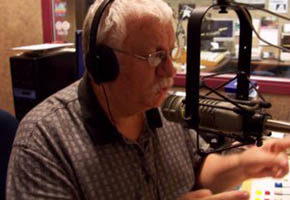
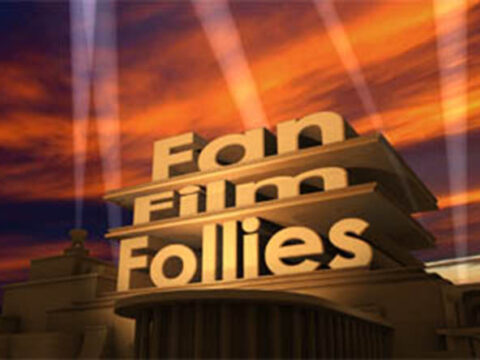


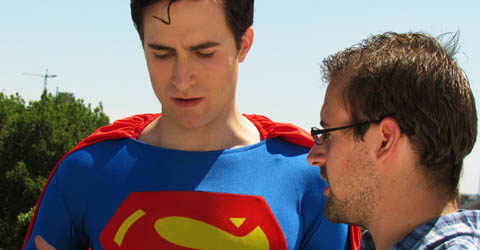
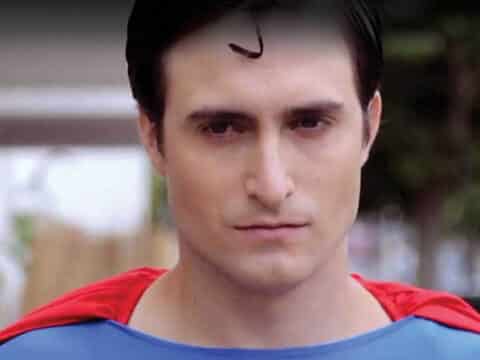

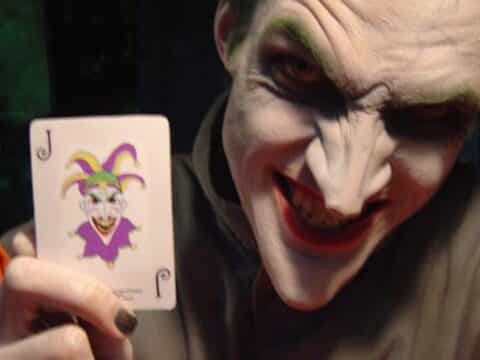
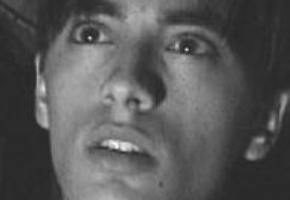

Terrific interview, and, yes, it’s a terrific fan film! I saw it last year not long after it turned up on the Doctor Who Fan Film Database, and everyone involved did a remarkable job giving us viewers a peek into an alternate 1963 in which “The Masters of Luxor” did indeed air. It’s really a must-watch for all Whovians.
I just happened across this video while doing a general websurf for Doctor Who fanvids, and ended up watching all four episodes in one go two weeks ago. I’d say this was about the best fan production I’ve ever seen. The 60s low-budget style of the programme allowed the makers to take full advantage of the limitations they had to work under and bring forth a very authentic Doctor Who serial —especially for shooting it in monochrome.
Amazing! JE, I would like to get a DVD of Masters of Luxor. A really fantastic effort.
hi guys just watched and read the review of Luxor, outstanding, hats of to all invilved.
is the DVD still available? if so could you please let me know what i need to do to receive a copy.
many thanks
Tony
Regarding this unauthorised rendition of my (late) father’s work…
Just had this referred to me. Watched the first part only so far. I’ll reserve judgement till I’ve seen the whole thing. To all you fans out there, ‘Doctor Who’ in general and ‘Masters’ in particular represent something that was at some point or other presented to you as one possible option, vying fur your interest and enthusiasm. For me, as the eldest offspring of Anthony Coburn, it is something I’ve had to live with whether I liked it or not, pretty well all my life. I was nine years old when ‘Tony’ came downstairs from his and my mother’s bedroom which at the time doubled as his study, to where my mother was serving up supper to my younger brother and myself. “What do you think of this, boys?” he asked, “TARDIS! Time And Relative Dimension In Space!” He had just made it up. At the time I thought it a great idea. ‘Tony’ was full of excitement at the project he had been part of virtually since its inception finally getting under way. It would not be long before all his (and his friend, Sydney Newman’s) original hopes and intentions for the series were to find themselves dashed, as something very much not of either man’s original devising came into being instead. Daggers were drawn and dirty deeds were done. Tony left the project white with fury and never spoke about it again. He even turned down the offer to take over as producer and ‘fix it’ at the time of the Jon Pertwee ‘transformation’. Tony’s post DW career with the BBC was both varied and successful, despite which, he remained unforgiving toward Verity Lambert, scornful of her other offerings ‘Adam Adamant’ in particular, and never regretted ‘shaking ‘Doctor Who’s dust from his feet’. He vastly preferred ‘Star Trek’ when we got it in the UK in 1969, as closer in spirit by far to the original intent behind DW, than anything Verity or her successors ever produced. Having said this. If I’d been Verity and been presented with ‘Masters’ as written, I’d have told him to rewrite the bloody thing as well. Not sure I’d have hived it off to Terry Nation behind his back rather than ‘front’ it out with him but then I’m not a twenty-seven year old girl, given my first big break, going up against an older ‘old-colonial’ religious-zealot who was integral to the project long before she was. I’ll watch the rest with interest. It’s weird to hear Tony’s lines spoken in American accents though.
Hi everyone. I was the director of the Masters of Luxor. It is an honor to have a descendant of Mr. Coburn watching our film… I can only hope we did your father’s script justice. As a fan of the show, I was fascinated by the unmade episodes (Masters of Luxor, Shada, The later Colin Baker scripts, etc.). We made Masters to see what it might have looked like if it were made (with a few liberties taken). It is strange even for myself to hear the American accents, but we decided against attempting fake British accents (which could have been worse, in my opinion). We also decided on creating a non-Hartnell Doctor, since Anthony Sarlo is obviously much younger. This explains why Susan does not refer to him as “Grandfather”. Anthony Sarlo does a great job filling in some of the character details above.
The production was definitely challenging, but I had the best cast and crew a person could ask for, particularly for no pay. The heat was overwhelming… and then you had to climb into the aluminum foil robot suits! I do indeed have the original mini DV tapes of the production, which I should digitize before mini DV cameras are impossible to find.
One of my favorite additions comes at the end when the camera pans in on the TARDIS console to the “fast return switch”, tying into the “The Edge of Destruction”. Also, the crooked credits… that was on purpose to match the original closing title sequence.
Thanks again for the kind words and a special thanks to Mr. Sarlo for bringing the film to youtube and keeping the project alive.